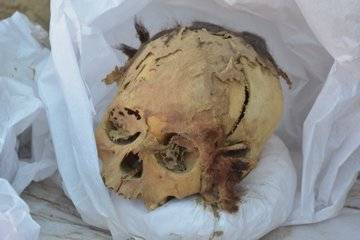A group of archaeologists in Peru has discovered a mummy from the pre-Inca era, estimated to be between 800 and 1,200 years old, with its skin and strands of hair well-preserved. The remains of a well-preserved teenage mummy were found at a depth of more than two meters (6.5 feet) in the suburbs of the Peruvian capital, Lima, at the archaeological site of Cajamarquilla. The team leader, Yomira Huamán, from San Marcos University in Lima, revealed to Agence France-Presse that the remains found in a tomb covered by a large rock likely belonged to a child around 12 or 13 years old.
Cajamarquilla was a mud-brick city built around 200 BC during the pre-Inca period and was inhabited until around 1500 AD. It is believed to have been home to 10,000 to 20,000 people. Huamán noted that "the high salt content in the region's sand likely contributed to the natural mummification of the child, and its sex has not been determined."
Parts of the skin remained on the arms and legs, while hair was found on the head, which had separated from the body. There were also dental remains in the jaw. Huamán stated, "The discovery is very important because it is well-preserved." Next to the mummy, the team found a stone weapon, a plate, a copper needle, and remnants of cloth, corn, and chili peppers.




